|
|
2018 2017 2016 2015 2014 2013 2012 2011 2010 2009 2008 2007 2006 2005 2004 2003 PhD
| Binary stars in the Galactic thick disc |
|
R.G. Izzard, H. Preece, P. Jofre, G.M. Halabi, T. Masseron, C.A. Tout |
|
The combination of asteroseismologically measured masses with abundances from detailed analyses of stellar atmospheres challenges our fundamental knowledge of stars and our ability to model them. Ancient red-giant stars in the Galactic thick disc are proving to be most troublesome in this regard. They are older than 5 Gyr, a lifetime corresponding to an initial stellar mass of about 1.2 M⊙. So why do the masses of a sizeable fraction of thick-disc stars exceed 1.3 M⊙, with some as massive as 2.3 M⊙? We answer this question by considering duplicity in the thick-disc stellar population using a binary population-nucleosynthesis model. We examine how mass transfer and merging affect the stellar mass distribution and surface abundances of carbon and nitrogen. We show that a few per cent of thick-disc stars can interact in binary star systems and become more massive than 1.3 M⊙. Of these stars, most are single because they are merged binaries. Some stars more massive than 1.3 M⊙ form in binaries by wind mass transfer. We compare our results to a sample of the APOKASC data set and find reasonable agreement except in the number of these thick-disc stars more massive than 1.3 M⊙. This problem is resolved by the use of a logarithmically flat orbital-period distribution and a large binary fraction.
|
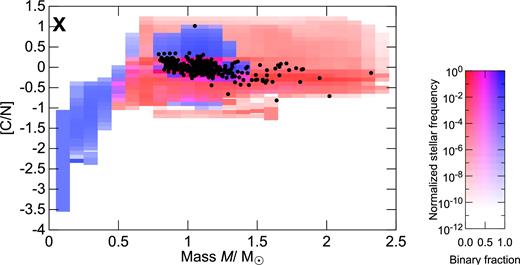
|
| Post-AGB Discs from Common-Envelope Evolution |
|
R.G. Izzard, A.S. Jermyn |

|
Post-asymptotic giant branch (post-AGB) stars with discs are all binaries. Many of these binaries have orbital periods between 100 and 1000 days so cannot have avoided mass transfer between the AGB star and its companion, likely through a common-envelope type interaction. We report on preliminary results of our project to model circumbinary discs around post-AGB stars using our binary population synthesis code binary_c. We combine a simple analytic thin-disc model with binary stellar evolution to estimate the impact of the disc on the binary, and vice versa, fast enough that we can model stellar populations and hence explore the rather uncertain parameter space involved with disc formation. We find that, provided the discs form with sufficient mass and angular momentum, and have an inner edge that is relatively close to the binary, they can both prolong the life of their parent post-AGB star and pump the eccentricity of orbits of their inner binaries.
|
| The blue straggler V106 in NGC6791: a prototype progenitor of old single giants masquerading as young |
|
K. Brogaard, S.M. Christiansen, F. Grundahl, A. Miglio, R.G. Izzard, et al.
|
|
We determine the properties of the binary star V106 in the old open cluster NGC 6791 . We identify the system to be a blue straggler cluster member by using a combination of ground-based and Kepler photometry and multi-epoch spectroscopy. The properties of the primary component are found to be M_p~ 1.67 M⊙, more massive than the cluster turn-off, with R_p~ 1.91 R⊙ and Teff = 7110 ± 100 K. The secondary component is highly oversized and overluminous for its low mass with M_s~ 0.182 M⊙ , R_s~ 0.864 R⊙, and Teff = 6875 ± 200 K. We identify this secondary star as a bloated (proto) extremely low-mass helium white dwarf. These properties of V106 suggest that it represents a typical Algol-paradox system and that it evolved through a mass-transfer phase, which provides insight into its past evolution. We present a detailed binary stellar evolution model for the formation of V106 using the MESA code and find that the mass-transfer phase only ceased about 40 Myr ago. Due to the short orbital period (P = 1.4463 d), another mass-transfer phase is unavoidable once the current primary star evolves towards the red giant phase. We argue that V106 will evolve through a common-envelope phase within the next 100 Myr and merge to become a single overmassive giant. The high mass will make it appear young for its true age, which is revealed by the cluster properties. Therefore, V106 is potentially a prototype progenitor of old field giants masquerading as young.
|
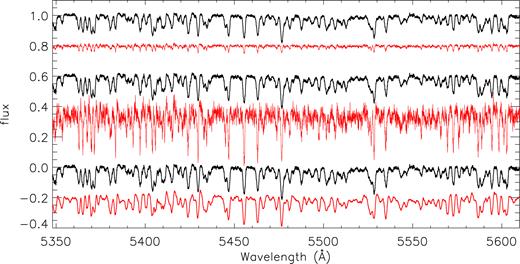
|
| Post-common envelope binary systems experiencing helium-shell-driven stable mass transfer |
|
G.M. Halabi, R.G. Izzard, C.A. Tout |
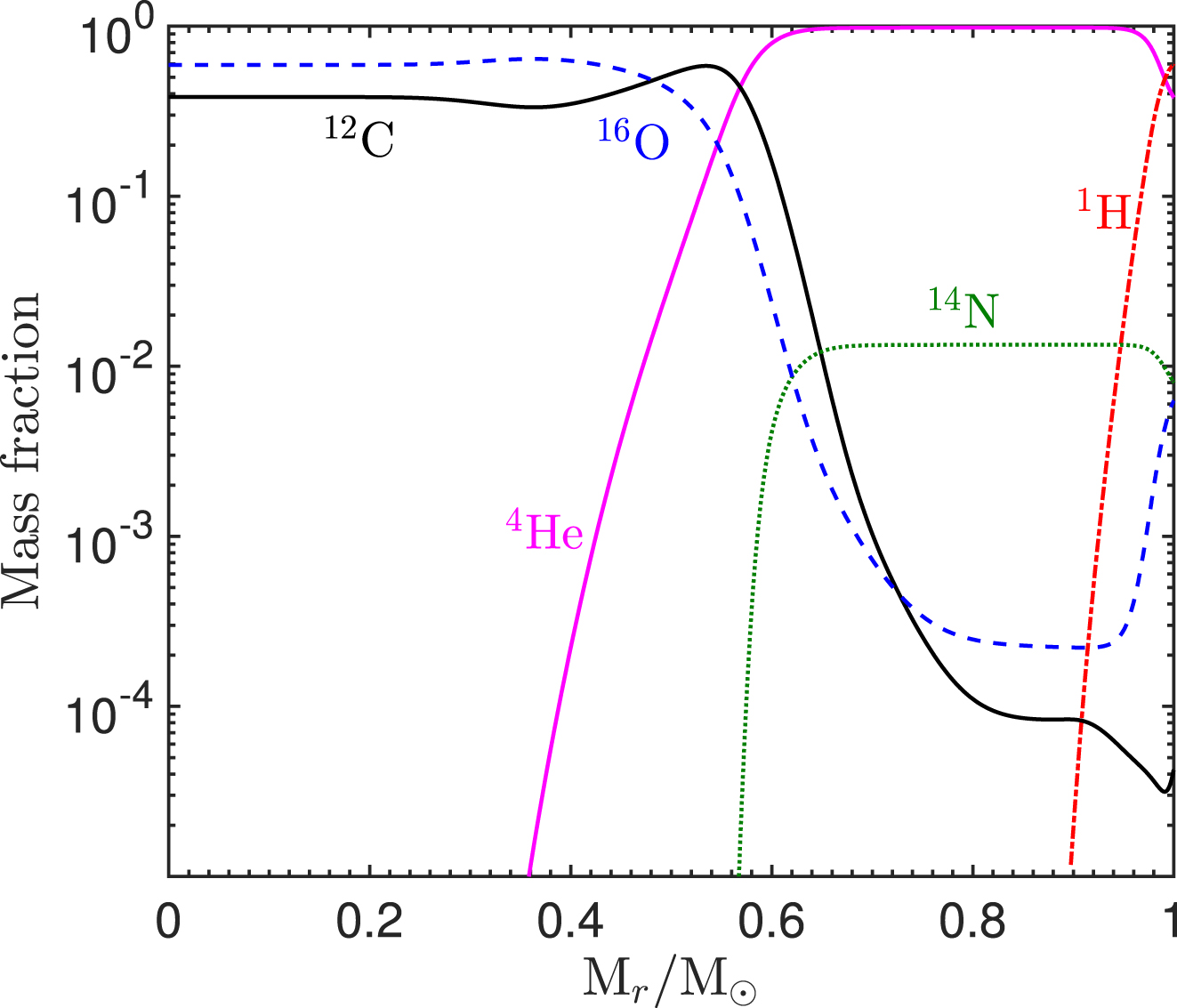
|
We evolve stellar models to study the common envelope (CE) interaction of an early asymptotic giant branch star of initial mass 5 M⊙ with a companion star of mass ranging from 0.1 to 2 M⊙. We model the CE as a fast stripping phase in which the primary experiences rapid mass loss and loses about 80 per cent of its mass. The post-CE remnant is then allowed to thermally readjust during a Roche lobe overflow (RLOF) phase and the final binary system and its orbital period are investigated. We find that the post-CE RLOF phase is long enough to allow nuclear burning to proceed in the helium shell. By the end of this phase, the donor is stripped of both its hydrogen and helium and ends up as carbon-oxygen white dwarf of mass about 0.8 M⊙. We study the sensitivity of our results to initial conditions of different companion masses and orbital separations at which the stripping phase begins. We find that the companion mass affects the final binary separation and that helium-shell burning causes the star to refill its Roche lobe leading to post-CE RLOF. Our results show that double mass transfer in such a binary interaction is able to strip the helium and hydrogen layers from the donor star without the need for any special conditions or fine tuning of the binary parameters.
|
| An excess of massive stars in the local 30 Doradus starburst |
|
F.R.N. Schneider et al. |
|
The 30 Doradus star-forming region in the Large Magellanic Cloud is a nearby analog of large star-formation events in the distant universe. We determined the recent formation history and the initial mass function (IMF) of massive stars in 30 Doradus on the basis of spectroscopic observations of 247 stars more massive than 15 solar masses (M⊙). The main episode of massive star formation began about 8 million years (My) ago, and the star-formation rate seems to have declined in the last 1 My. The IMF is densely sampled up to 200 M⊙ and contains 32 ± 12% more stars above 30 M⊙ than predicted by a standard Salpeter IMF. In the mass range of 15 to 200 M⊙, the IMF power-law exponent is 1.90-0.26+0.37, shallower than the Salpeter value of 2.35.
|

|
| The VLT-FLAMES Tarantula Survey. XXIX. Massive star formation in the local 30 Doradus starburst |
|
F.R.N. Schneider et al. |
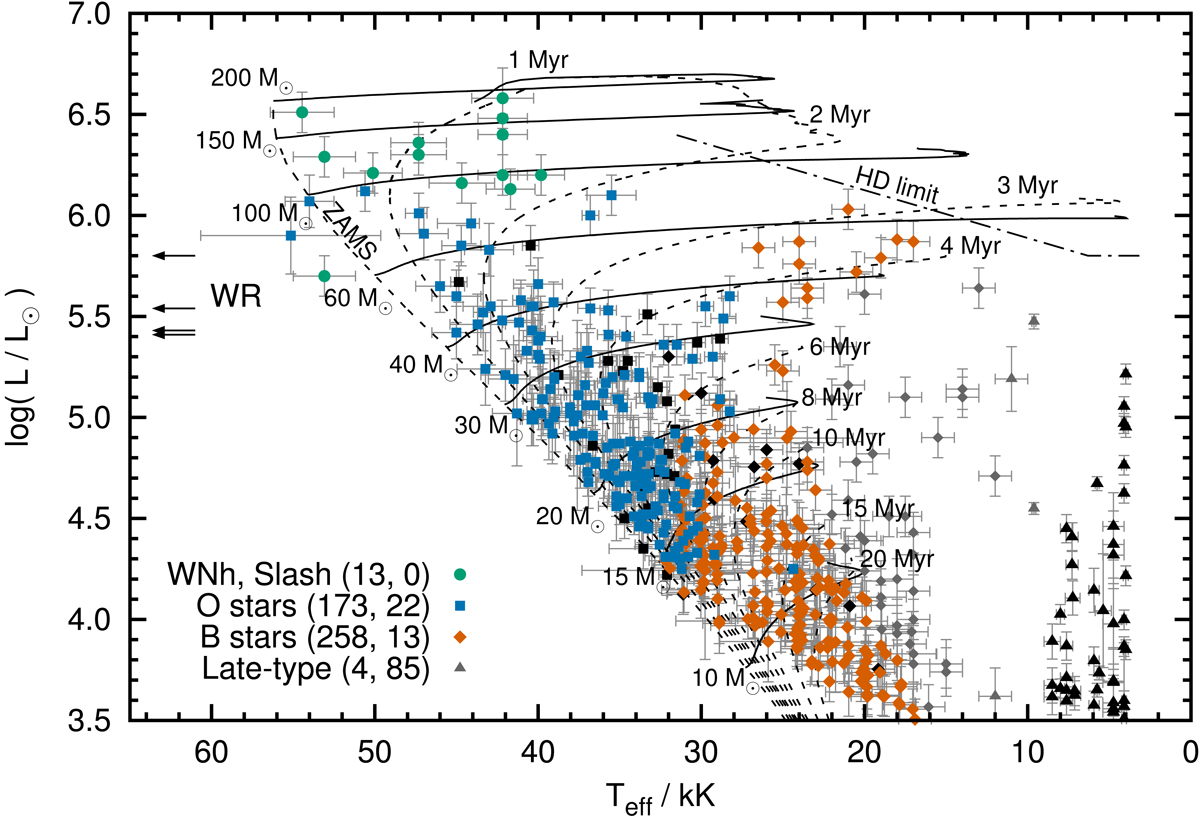
|
The 30 Doradus (30 Dor) nebula in the Large Magellanic Cloud (LMC) is the brightest HII region in the Local Group and a prototype starburst similar to those found in high redshift galaxies. It is thus a stepping stone to understand the complex formation processes of stars in starburst regions across the Universe. Here, we have studied the formation history of massive stars in 30 Dor using masses and ages derived for 452 mainly OB stars from the spectroscopic VLT-FLAMES Tarantula Survey (VFTS). We find that stars of all ages and masses are scattered throughout 30 Dor. This is remarkable because it implies that massive stars either moved large distances or formed independently over the whole field of view in relative isolation. We find that both channels contribute to the 30 Dor massive star population. Massive star formation rapidly accelerated about 8 Myr ago, first forming stars in the field before giving birth to the stellar populations in NGC 2060 and NGC 2070. The R136 star cluster in NGC 2070 formed last and, since then, about 1 Myr ago, star formation seems to be diminished with some continuing in the surroundings of R136. Massive stars within a projected distance of 8 pc of R136 are not coeval but show an age range of up to 6 Myr. Our mass distributions are well populated up to 200 M⊙. The inferred IMF is shallower than a Salpeter-like IMF and appears to be the same across 30 Dor. By comparing our sample of stars to stellar models in the Hertzsprung-Russell diagram, we find evidence for missing physics in the models above log L/L⊙ = 6 that is likely connected to enhanced wind mass loss for stars approaching the Eddington limit. Our work highlights the key information about the formation, evolution and final fates of massive stars encapsulated in the stellar content of 30 Dor, and sets a new benchmark for theories of massive star formation in giant molecular clouds.
|
| Population synthesis of binary stars |
|
R.G. Izzard and G.M. Halabi |
|
Many aspects of the evolution of stars, and in particular the evolution of binary stars, remain beyond our ability to model them in detail. Instead, we rely on observations to guide our often phenomenological models and pin down uncertain model parameters. To do this statistically requires population synthesis. Populations of stars modelled on computers are compared to populations of stars observed with our best telescopes. The closest match between observations and models provides insight into unknown model parameters and hence the underlying astrophysics. In this brief review, we describe the impact that modern big-data surveys will have on population synthesis, the large parameter space problem that is rife for the application of modern data science algorithms, and some examples of how population synthesis is relevant to modern astrophysics.
|
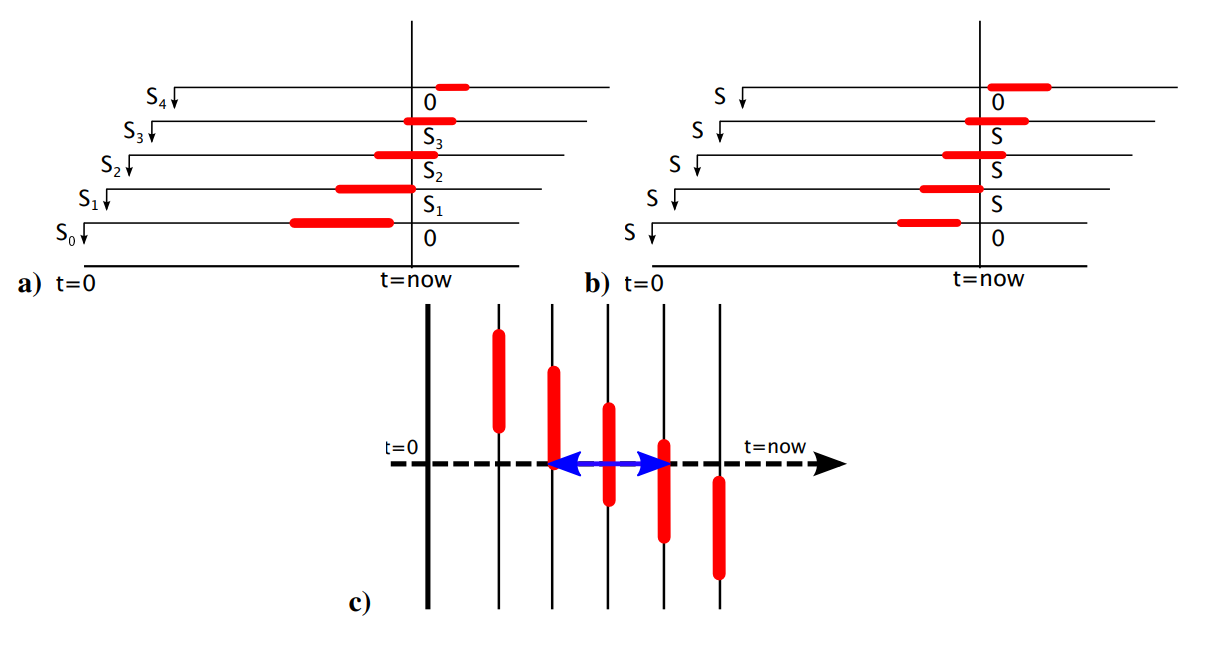
|
| Progenitors of gravitational wave mergers: binary evolution with the stellar grid-based code COMBINE |
|
M.U. Kruckow, T.M. Tauris, N. Langer, M. Kramer, R.G. Izzard
|
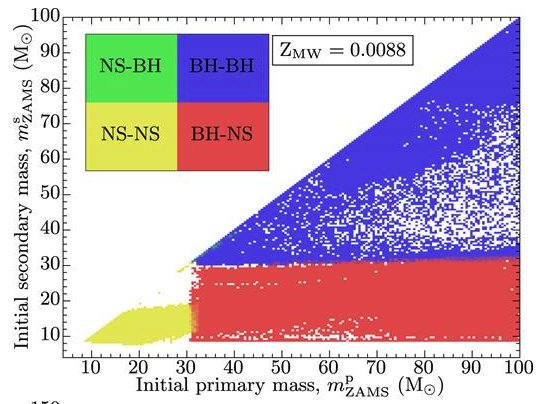
|
The first gravitational wave detections of mergers between black holes and neutron stars represent a remarkable new regime of high-energy transient astrophysics. The signals observed with LIGO-Virgo detectors come from mergers of extreme physical objects which are the end products of stellar evolution in close binary systems. To better understand their origin and merger rates, we have performed binary population syntheses at different metallicities using the new grid-based binary population synthesis code COMBINE. Starting from newborn pairs of stars, we follow their evolution including mass-loss, mass transfer and accretion, common envelopes, and supernova explosions. We apply the binding energies of common envelopes based on dense grids of detailed stellar structure models, make use of improved investigations of the subsequent Case BB Roche lobe overflow and scale supernova kicks according to the stripping of the exploding stars. We demonstrate that all the double black hole mergers, GW150914, LVT151012, GW151226, GW170104, GW170608, and GW170814, as well as the double neutron star merger GW170817, are accounted for in our models in the appropriate metallicity regime. Our binary interaction parameters are calibrated to match the accurately determined properties of Galactic double neutron star systems, and we discuss their masses and types of supernova origin. Using our default values for the input physics parameters, we find a double neutron star merger rate of {3.0} Myr^{-1} for Milky-Way equivalent galaxies. Our upper limit to the merger-rate density of double neutron stars is R~eq {400} yr^{-1} Gpc^{-3} in the local Universe (z = 0).
|
|
|
|
Contact: Email 
|
|